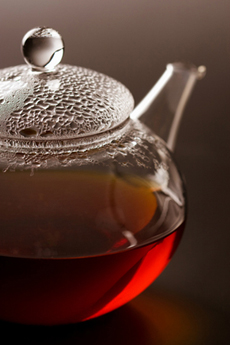TOP PICK OF THE WEEK: Irish Breakfast Tea
|
|
Most tea drinkers have heard of Irish breakfast tea. Fewer have heard of Assam (ah-SAHM). Yet—surprise!—they’re the same tea. The Irish developed such a fondness for the rich, malty black tea from northeast India that they adopted it as their morning cup. Hence, “Irish breakfast tea.” Normally we’d advise that, if your palate demands the best, you should avoid products called “Irish breakfast tea.” Unless you already know and like the brands, they’re likely to be more mass market teas, less malty and missing the honey nuances that delight with some Assams. A tea labeled Assam will likely be a better tea. This is a generalization, of course, but it usually works for us. However, for St. Patrick’s Day celebrations and gift-giving, “Irish breakfast tea” makes good sense. Check out our full review of Irish breakfast/Assam tea. Discover how Irish breakfast tea differs from English breakfast tea. |
|
|
We’ve even recommended a gift box of Assam/Irish breakfast tea and a silvery steel measuring scoop, tied with a green ribbon. It’s a gift you can give to yourself, too. Great tea needs no milk and sugar. It’s always been drunk “straight” in China and Japan, where tea has been brewed for thousands of years. According to some sources, the Dutch were the first to add milk to both tea and coffee, in the 17th century. In the 20th century, mass demand in the west and mechanized production techniques (CTC) led to the production of inferior teas, which needed a hit of sugar to provide a pleasing flavor. Masala Chai: A Related History Due to English influence, today’s chai, or more properly, masala chai (masala means spice, chai means tea), is very different from the original—an ancient Indian ayurvedic beverage, a cleansing spice tonic that did not include any tea. When the British began to establish tea plantations in Assam, in 1835, they added milk and sweetener to their tea, as they did at home. The British “recipe” was fused with the original masala chai drink to create what we know today as masala chai. However, tea was too expensive for most Indians and largely grown for export. In the early 1900s, the British-owned Indian Tea Association began to promote tea consumption to Indian consumers. Because black tea was still an expensive ingredient, vendors used milk, sugar and spices—the ingredients of today’s masala chai—to create flavorful brews while keeping costs down. The drink’s popularity spread throughout India and became even more popular in the 1960s, when mechanized tea production made black tea affordable for the common man. TEA TRIVIA: After water, tea is the most widely consumed beverage in the world.
|
||



